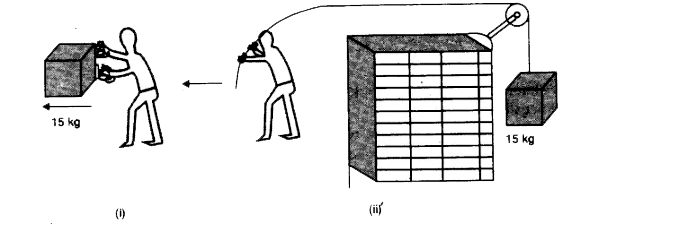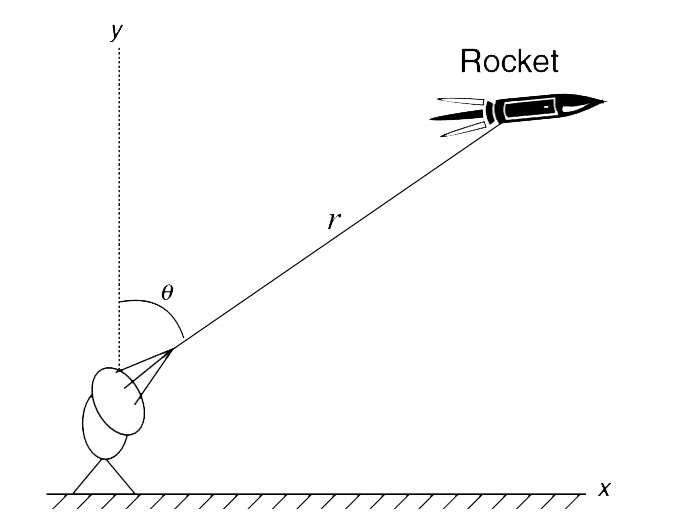Rocket in flight is not an illustration of projectle .
Rocket takes flight due to combustion of fuet and does not move undr the graveity effect alone.
(a) Statement-1 is true , Statement-2 is true , Statvement -2 is correct explanation of Statement-1 .
(b) Statement-1 is true , statement -2 is true , statement -2 is not coerrecrt explanation of Statement-1.
(C ) Statement-1 is true , Statement-2 is false.
(d) Statement-1 is false , Statement-2 is true.
The correct Answer is:B
A projectile is the name given to a body which is once projected coan move uner gravity in two dimensions without consuming any fuel or propelled by any enging. Hence both Assertion and Reason are correct.
Topper's Solved these Questions
- KINEMATICSBook:PRADEEPChapter:KINEMATICSExercise:1 NCERT Comprehension
Explore 4 Videos
- KINEMATICSBook:PRADEEPChapter:KINEMATICSExercise:4 NCERT Integer type
Explore 4 Videos
- GRAVIATIONBook:PRADEEPChapter:GRAVIATIONExercise:Assertion-Reason Type Questions
Explore 19 Videos
- LAWS OF MOTIONBook:PRADEEPChapter:LAWS OF MOTIONExercise:Assertion- Reason Type Questions
Explore 17 Videos
Similar Questions
Is the rocket in flight is an illustration of projectile ?
View SolutionAnswer the following:
a) The casing of a rocket in flight burns up due to friction. At whose expense is the heat required for burning obtained? The rocket or the atmosphere?
b) Comets move around the sun in highly elliptical orbits. The gravitational force on the comet due to the sun is not normal to the comet's velocity in general. Yet the work done by the gravitatonal force over every complete orbit of the comet is zero. Why?
c) An artificial satellite orbiting the earth in very atmosphere loses its energy grdually due to dissipation against atmospheric resistance, howerver small. Why then does its speed increase progressively as it comes closer and closer tothe earth? d)In fig i) the man walks 2m carrying a mass of 15 kg on his hands. In Fig ii) he walks the same distance pulling the rope behind him. The rope goes over pulley, and a mass of 15 kg hangs at its other end. In which case is the work done greater?

View Solution
Knowledge Check
Assertion : A rocket in flight is an illustration of projectile
Reason : Because roket is not projected with some initial veloctity .AIf both, Assertion and Reason are true and the Reason is the correct explanation of the AssertionBIf both, Assertion and Reason are true but Reason is not a correct explanation of the AssertionCIf Assertion is ture but the Reason is falseDIf both, Assertion and Reason are falseArrange the following steps in a sequence involved in the working of a rocket.
(A) Gases are produced when the fuel in the com bustion chamber is burnt.
(B) The gases come out with great force which is an action.
(C) The hot gases are allowed to escape through a nozzle.
(D) Due to this, the rocket moves with great speed in the other direction.
(E) As a reaction, the gases exert an opposite force on rocket.AACBEDBAECBDCBEACDDCABEDThe satellites when launched from the earth are not given the orbital velocity initially, a multistage rocket propeller carries the spacecraft up to its orbit and during each stage rocket has been fired to increase the velocity to acquire the desired velocity for a particular orbit. The last stage of the rocket brings the satellite in circular/elliptical (desired) orbit.
Consider a satellite of mass 150kg in a low circular orbit. In this orbit, we cannot neglect the effect of air drag. This air opposes the motion of satellite and hence the total mechanical energy of earth-satellite system decreases. That means the total energy becomes more negative and hence the orbital radius decreases which causes the increase in KE When the satellite comes in the low enough orbit, excessive thermal energy generation due to air friction may cause the satellite to burn up. Based on the above information, answer the following questions.
If due to air drag, the orbital radius of the earth decreases from R to R−△R,△R<<R, then the expression for increase in the orbital velocity △v isA△r2√GMR3B−△R2√GM2C△R√GMR3D−△R√GMR3
Answer the following:
a) The casing of a rocket in flight burns up due to friction. At whose expense is the heat required for burning obtained? The rocket or the atmosphere?
b) Comets move around the sun in highly elliptical orbits. The gravitational force on the comet due to the sun is not normal to the comet's velocity in general. Yet the work done by the gravitatonal force over every complete orbit of the comet is zero. Why?
c) An artificial satellite orbiting the earth in very atmosphere loses its energy grdually due to dissipation against atmospheric resistance, howerver small. Why then does its speed increase progressively as it comes closer and closer tothe earth? d)In fig i) the man walks 2m carrying a mass of 15 kg on his hands. In Fig ii) he walks the same distance pulling the rope behind him. The rope goes over pulley, and a mass of 15 kg hangs at its other end. In which case is the work done greater?

View Solution(i) A straight railway track is at a distance ‘d’ from you. A distant train approaches you travelling at a speed u(< speed of sound) and crosses you. How does the apparent frequency (f) of the whistle change with time (f0 is the original frequency of the whistle). Draw a rough f vs t graph.
(ii) A bat is tracking a bug. It emits a sound, which reflects off the bug. The bat hears the echo of the sound 0.1 seconds after it originally emitted it. The bat can tell if the insect is to the right or left by comparing when the sound reaches its right ear to when the sound reaches its left ear. Bat’s ears are only 2cm apart. Bats also use the frequency change of the sound echo to determine the flight direction of the bug. While hovering in the air (not moving), the bat emits a sound of 40.0kHz. The frequency of the echo is 40.4kHz. Assume that the speed of sound is 340m/s.
(a) How far away is the bug?
(b) How much time delay is there between the echo reaching the two ears if the bug is directly to the right of the bat?
(c) What is the speed of the bug?
View Solution(a) An unpowered rocket is in flight in air. At a moment the tracking radar gives following data regarding the rocket. r = distance of the rocket from the radar = 4000m,drdt=0,dθdt=1.8deg/sec, where θ is the angle made by position vector of the rocket with respect to the vertical.

(a) Neglect atmospheric resistance and take g=9.8m/s2 at the concerned height. Neglect height of radar. Calculate the height of the rocket above the ground.
(b) Two points A and B are moving in X - Y plane with constant velocity of VA=(6ˆi−9ˆj)m/s and VB=(ˆi+ˆj)m/s respectively. At time t=0 they are 15 m apart and both of them lie on y axis with A lying away on positive Y axis with respect to B. What is the angular velocity of A with respect to B at t=1s?
View SolutionA particle with charge e and mass m flies with non-relativistic velocity v at a distance b past a stationary particle with charge q. Neglecting the bending of the trajectory of the moving particle, find the enegry lost by this particle due to radiation during the total flight time.
View SolutionThe satellites when launched from the earth are not given the orbital velocity initially, a multistage rocket propeller carries the spacecraft up to its orbit and during each stage rocket has been fired to increase the velocity to acquire the desired velocity for a particular orbit. The last stage of the rocket brings the satellite in circular/elliptical (desired) orbit.
Consider a satellite of mass 150kg in a low circular orbit. In this orbit, we cannot neglect the effect of air drag. This air opposes the motion of satellite and hence the total mechanical energy of earth-satellite system decreases. That means the total energy becomes more negative and hence the orbital radius decreases which causes the increase in KE When the satellite comes in the low enough orbit, excessive thermal energy generation due to air friction may cause the satellite to burn up. Based on the above information, answer the following questions.
It has been mentioned in the passage that as r decreases, E decreases but K increases. The increase in K is [E= total mechanical energy, r= orbital radius, K= kinetic energy ]
View Solution

